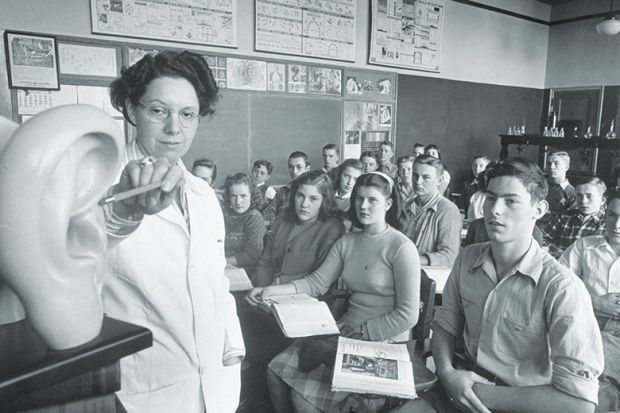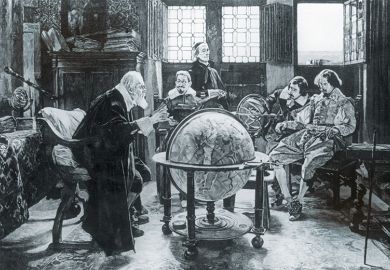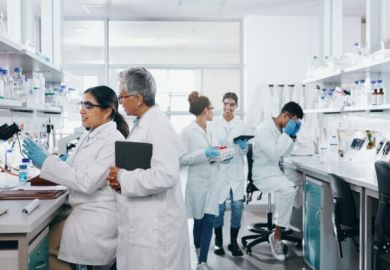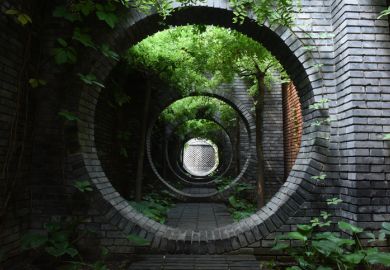How We Teach Science offers a detailed historical account of how science was first introduced into US classrooms and taught over the past century. John Rudolph’s excellent description of early science instruction is especially relevant today because we have not advanced much in this regard. We are frankly miserable at teaching science to students, even in the face of the most momentous technological achievements in human history. Because of this failing of our educational system, academics are largely to blame for society’s current state of scientific illiteracy that undermines human health and the wellbeing of our planet.
First, Rudolph explores the origins of scientific enquiry as a foundation for teaching science. This approach, promoted by eminent scientists, was wholly appropriate, yet, as the author explains, these experts were often so esoteric or lofty in their goals for a scientifically educated citizenry that their expectations could not possibly be met with the educational apparatus available at that time. For instance, early efforts in scientific instruction were to be focused on how scientists think and, therefore, how students should think. To this end, the scientific method was repeatedly overemphasised.
Unfortunately, such a formulaic approach to studying science was insufficient to allow students to visualise the scientific process of enquiry, hypothesis generation and falsification. Specifically, the scientific method was too removed from the practical limitations of the classroom and required a huge initial level of scientific understanding that students and teachers simply did not possess. This may explain why, today, the scientific method is really not emphasised beyond the elementary classroom other than as an important but rudimentary rubric for evaluating observations. Instead, we now teach a body of subject-specific facts with an emphasis on logic, so that students acquire the proper vocabulary to accurately describe observations and to ask questions in the context of the scientific method. Thus, explaining to students how they should think is often less effective than showing them what that thinking looks and sounds like.
Next, Rudolph describes a problem still common today: a lack of understanding of science by teachers and an inability to engender student enthusiasm for science. As depicted in this book, early scientific lessons resembled the humanities and rhetoric as teachers used the methods with which they were most familiar: textbook recitation and memorisation. This was an undesirable approach to learning science because having students repeat nonsensical (to them) terms devoid of context did not increase their understanding. Even so, teachers continuously resisted suggestions to change their methods of instruction, stubbornly holding textbooks open at the correct answers because they knew too little science to verify student responses. These entrenched and outmoded pedagogical methods created further confusion and conflict when classrooms, influenced by the work of scientists in Germany and other centres of scientific excellence, were encouraged to introduce actual laboratory experiments.
The introduction of laboratory work into the science classroom was designed to address the fact that rote memorisation was not sufficient to teach science. With experimentation available to every student, thought leaders surmised, classrooms would be transformed into light-filled incubators of pure enquiry. The idea was so alluring that “laboratories” were appended to non-scientific courses as well. Rudolph describes the essential and generous work of our esteemed educational institutions: Johns Hopkins University, the University of Chicago, the University of Michigan and Harvard University. These were staffed by highly prescient faculty who were engaged in early scientific excellence and willing to share that prowess with US high schools and instructors. Yet although teachers were strongly encouraged to support this type of “hands-on” learning and problem-solving, often these exercises were so poorly implemented that they simply played lip service to educational concepts that were in vogue at the time.
Rudolph also reveals how the National Science Foundation and other respected bodies attempted to contribute to meaningful scientific instruction. This generosity is especially disheartening because, as he explains, the teachers approached by these well-regarded groups were either unaware of their extensive efforts to professionalise science education or flatly refused to make use of the lavish resources and materials offered to their students. Because this era in US history was one of unprecedented government investment in science and scientific instruction, the outcomes are especially distressing. Thus, from the 1950s until the 1970s, teachers’ refusal to change their classroom approaches resulted in science instruction again reduced to meet the limited understanding but greater comfort of uninitiated science teachers who returned to promoting memorisation of facts and textbook recitation.
An interesting topic within the book is the introduction of psychology into student learning, specifically using student interest to guide what was taught in the sciences. This novel concept emerged at a time when high school enrollment was surging but student interest in certain scientific topics was not. Educators thus believed that tailoring curricula to student enthusiasms was in order. This idea was augmented by the belief that traditional scientific laboratory instruction was beyond the intellectual capability of most US students, who were referred to as the “great army of the incapables”. Unfortunately, this myth persists today – that students are qualified to dictate course content and, by extension, are no longer pupils but customers for an educational product. Another erroneous belief within early student-guided science instruction was that students would doubt a scientific discipline if the evolution of thought and refinement of conclusions suggested that what was initially learned was no longer correct. Fortunately, no serious science student today is confused when scientific understandings are expanded or modified in the face of better data. Rather, students accept that more experimentation yields a more refined understanding. Thus, early science instructors seriously underestimated students’ ability to receive and re-evaluate scientific information when given the correct tools to do so.
Rudolph concludes the book by describing the current public pathology regarding science that has arisen from a century of poor teaching and failure to understand students: frank distrust of scientists and the data they offer. He reminds us that part of teaching science is instilling the idea that scientists are experts to be believed and respected. Imparting an appropriate reverence for the study of science and the pursuit of truth is key to restoring balance in public discourse about science and pseudoscience, something that contaminates our collective intelligence. Rudolph also describes our current efforts to correct a century of miseducation and misdirection. It is heartening that he ends his book on a note of optimism and strong positive encouragement for both scientists and students of science.
In summary, How We Teach Science presents an interesting catalogue of American failures in science instruction that we have not ameliorated today. Teachers still operate beyond their scope of expertise; students still resist the sciences as “too hard”; and few instructors engender the appropriate respect for science or the belief that scientific literacy is mandatory for a full and responsible adult life. We must, as Rudolph encourages us, modify our errors in science education, emphasising its absolute relevance to our existence. We can do this by removing poor instructors and rewarding the best science teachers, exposing our students to only the best-trained faculty. Taking a detached scientific approach is appropriate and necessary for us to revise our history of poor science teaching and to allow our students to enjoy adulthoods full of enquiry, intellectual honesty and joy.
Jennifer Schnellmann is associate professor of pharmacology at the University of Arizona.
How We Teach Science: What’s Changed, and Why It Matters
By John L. Rudolph
Harvard University Press, 320pp, £25.95
ISBN 9780674919341
Published 28 June 2019
The author
John L. Rudolph, professor of science education at the University of Wisconsin-Madison, was born in Milwaukee, Wisconsin and went to schools in the city before moving to a farming community about 20 minutes away. Because the family wasn’t very well off, he recalls, he was “limited in my choices of university. I ended up commuting to the University of Wisconsin-Milwaukee…and completed the teacher education programme in biology and chemistry there.”
It was during the teaching methods class that Rudolph “first became interested in using the history of science as a means to teach science content. I taught eighth-grade science [to children aged 13-14] for a while before returning to university to study the history of science and science education formally (between stints teaching high-school physics, chemistry and biology) at the University of Wisconsin-Madison. It was during my PhD studies at Wisconsin that I began to immerse myself in the history of science teaching in the United States.”
In his own teaching, Rudolph discovered that it was when pupils “were given opportunities to read about the development of scientific ideas – to read histories and original scientific papers” that they “really began to engage with those ideas at a much more profound level”. Most research also indicated that “it’s absolutely essential that we teach about how science works and how we know what we know more than just teaching ‘what’ we know in some rote fashion.
“While that sort of rote learning can pay off in the short term with higher standardised test scores, it almost always leaves students with misunderstandings of the scientific enterprise.” This had “serious negative consequences for the larger relationship between science and society”, to be seen today, for example, in the way that “some members of the public struggle with understanding climate change and the health issues around vaccination”.
Matthew Reisz
Register to continue
Why register?
- Registration is free and only takes a moment
- Once registered, you can read 3 articles a month
- Sign up for our newsletter
Subscribe
Or subscribe for unlimited access to:
- Unlimited access to news, views, insights & reviews
- Digital editions
- Digital access to THE’s university and college rankings analysis
Already registered or a current subscriber?







